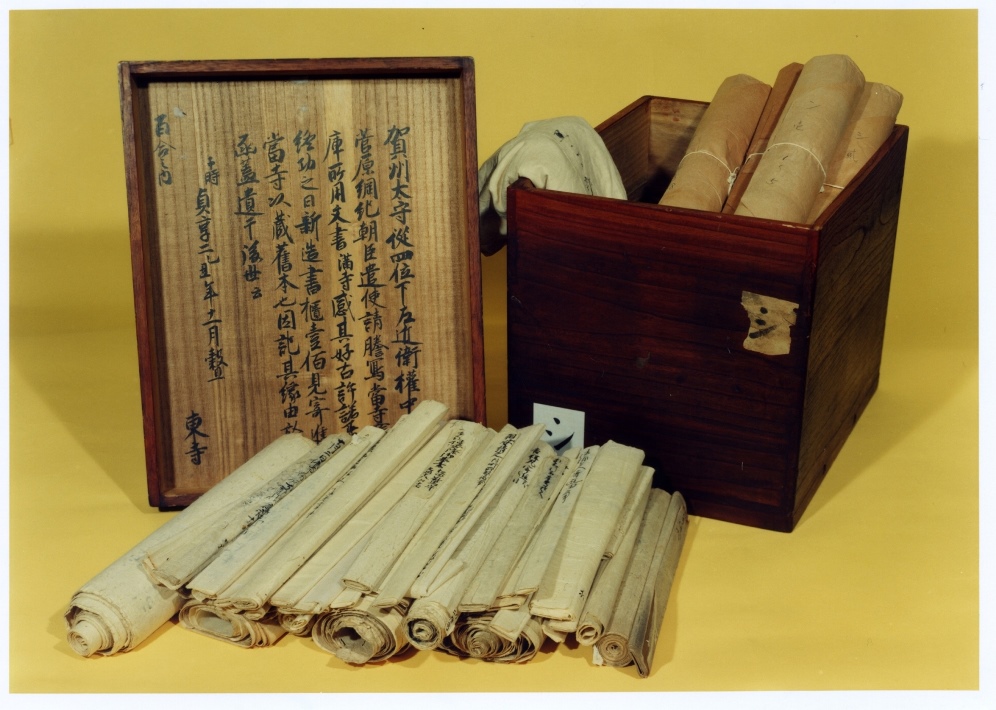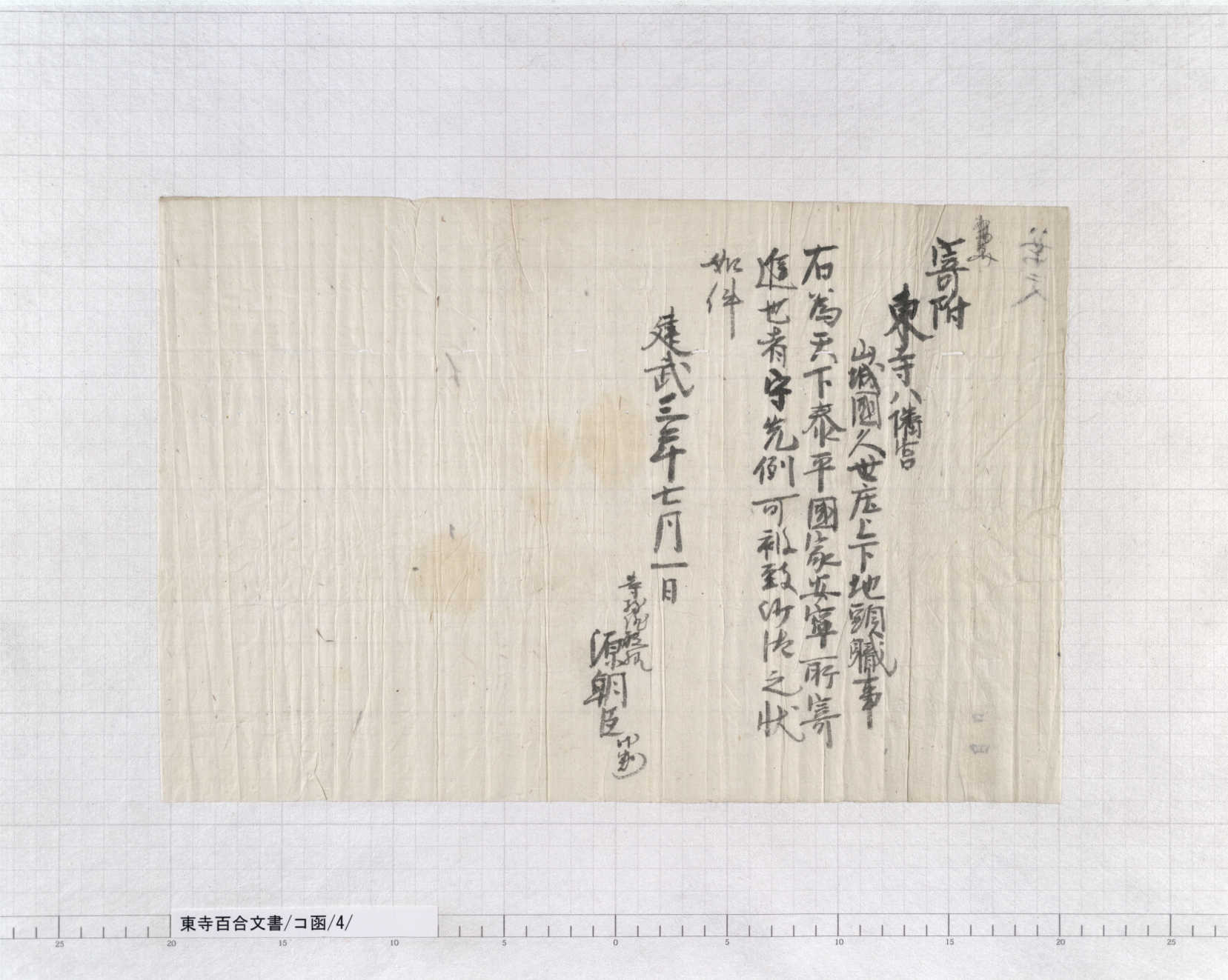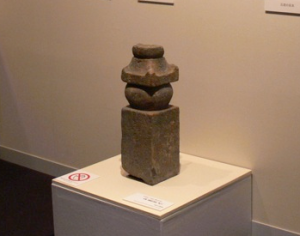Today’s story behind the Hyakugo Archives is not about the content of the documents, but about the Kiribako (boxes made of paulownia wood) that contain them.

Ashikaga Takauji(足利尊氏) narrowly won the battle, thanks to the protection of the Toji Chinju-Hachimangu shrine(東寺鎮守八幡宮). However, fights continued in Kyoto and in Hieizan (Mt. Hiei), and the war situation was unpredictable. As Takauji keenly wanted to achieve his fervent wish, he contributed an estate of his to Toji Chinju-Hachimangu on the day following the “release of sacred arrows by the deity”, praying for further protection.

Continue reading Prayer for victory – Contribution from Kuze Kamishimonosho Jitoshiki
The Todaimon(東大門) gate quietly stands to the northeast of the five-storied pagoda of Toji. Todaimon is also called “Akazunomon(不開門) (lit. never-opened gate)”. As its name suggests, the doors of this gate are not opened except on special occasions. Do you know why?
Continue reading Guards of Toji: the Akazunomon gate and the Toji Chinju-Hachimangu shrine
Kobo Daishi Kukai (弘法大師空海)(774 – 835) was the founder of the Shingon sect of Buddhism, and has been worshipped by a large number of people even after his death. Numerous picture scrolls have also been created depicting his life and profile.

Stone pagoda unearthed near the site of the Rajomon gate, owned by the Museum of Kyoto
* This image is not provided with a CC BY license.
An excavation in 1961 unearthed a stone pagoda near the presumed site of the Rajomon gate (羅城門), close to Toji Temple. On this stone pagoda, the following letters were recorded:
天正八年
(Sanskrit alphabet “Ā”) 権僧正亮祐大和尚位 (Gonnosojo Ryoyu Daiwajoi)
壬三月十八日
Continue reading Ryoyu, a Buddhist monk recorded on a stone pagoda
The Onin War refers to a battle that started in 1467 and continued for about a decade, fought in Kyoto by the eastern army and western army of military governors. It is recorded in “Nijuikku-kata Hyojo Hikitsuke” (Box Hiragana CHI, No. 19) that Toji Temple sent its treasures and documents to the Daigo-ji Temple (醍醐寺) for shelter in September 1467, shortly after the war started, for the purpose of protecting them from the fires of war. “Nijuikku-kata” (廿一口方) refers to an in-house organization of Toji Temple in medieval times, which consisted of 21 monks. “Hikitsuke” (引付) means minutes of meetings (“Hyojo”) held by such organizations.
When Toji brought disputes to court presided by Miyoshi Nagayoshi (三好長慶) in the Sengoku period, they concluded an agreement for consultancy with Yasui Soun (安井宗運), for the purpose of enabling efficient proceedings. Therefore, Soun, as the representative of Toji visited Matsunaga Hisahide (松永久秀) many times, a vassal of Miyoshi Nagayoshi who often handled trials involving Toji.
Continue reading Takiyamajo castle in the Sengoku period, as seen by Yasui Soun

When a dispute occurred in the Sengoku period, the Toji temple asked Miyoshi Nagayoshi (三好長慶), a powerful figure who prevailed in the Muromachi bakufu (室町幕府, Muromachi shogunate) and across the Kansai and Shikoku regions, to preside over trials.
Continue reading Sakai in the Sengoku period, as seen by Yasui Soun